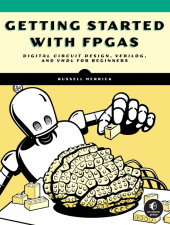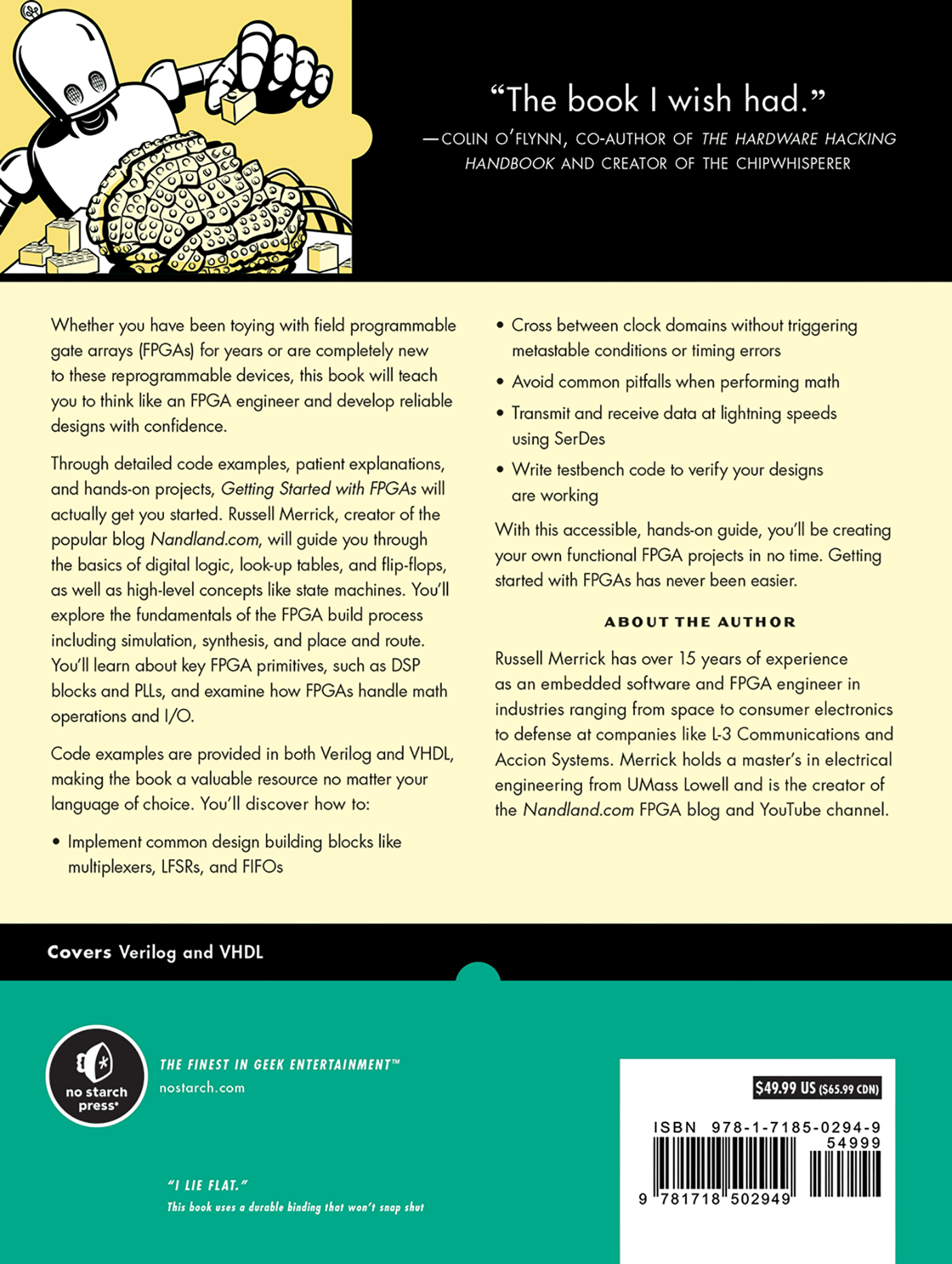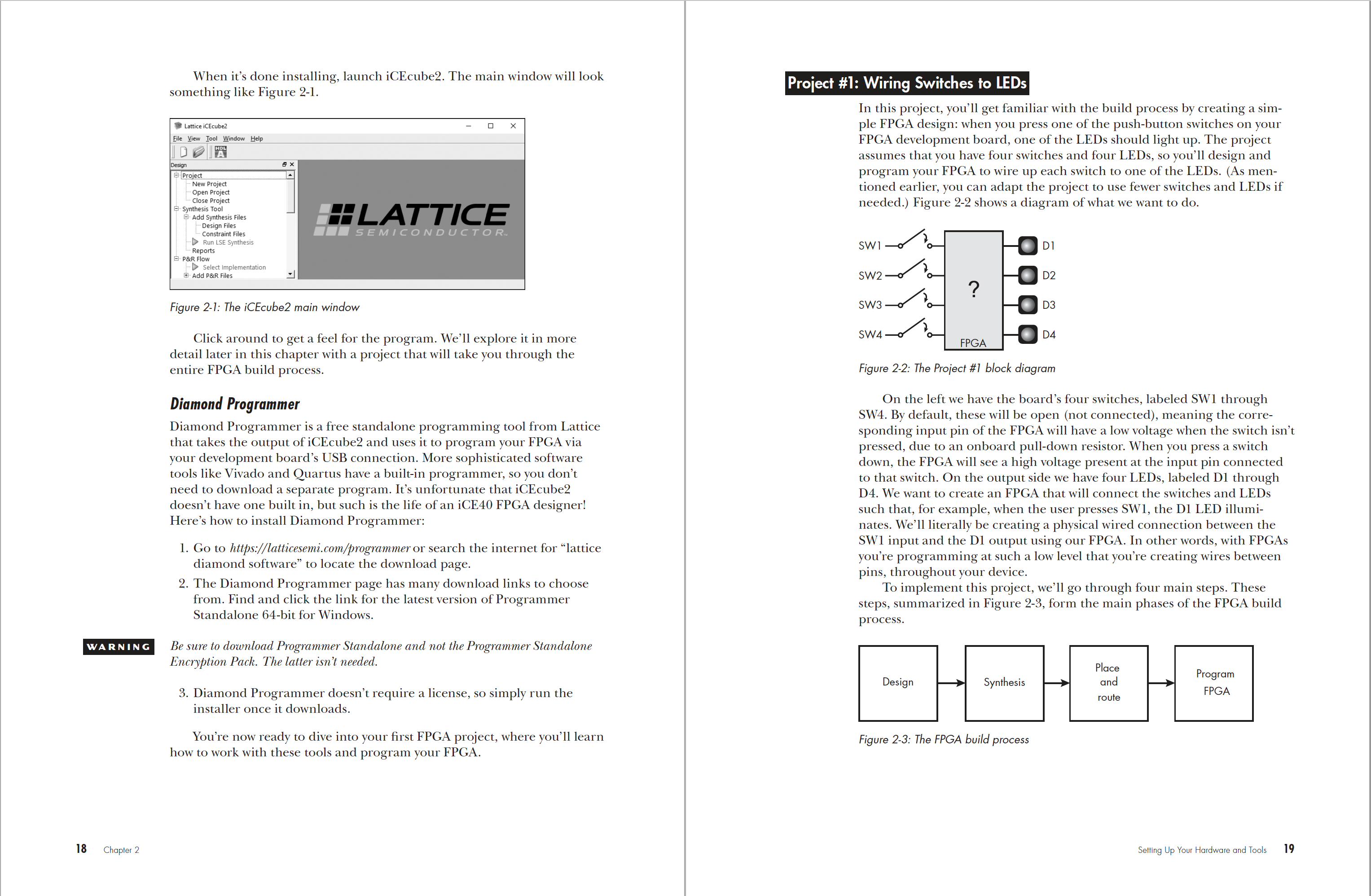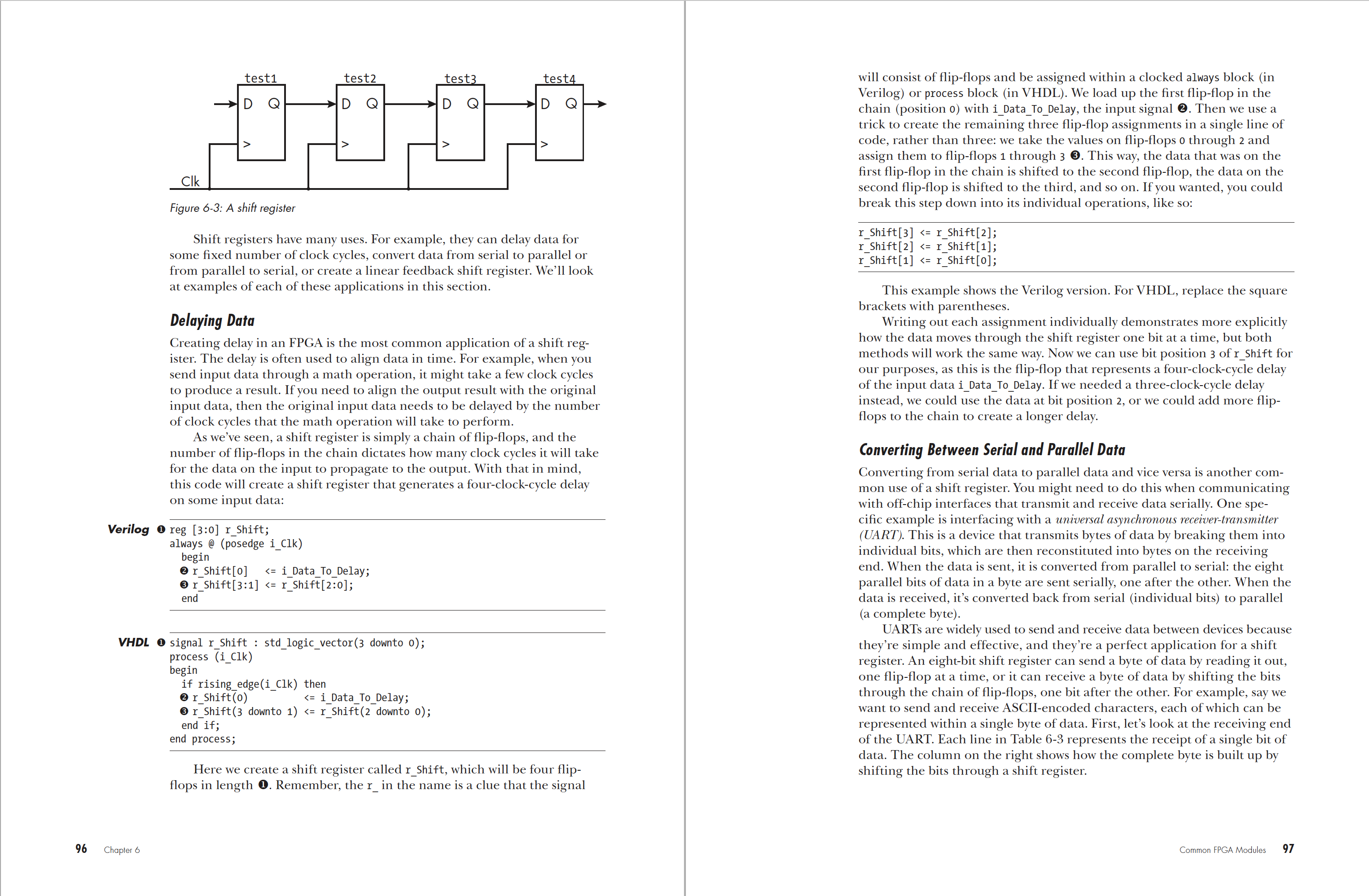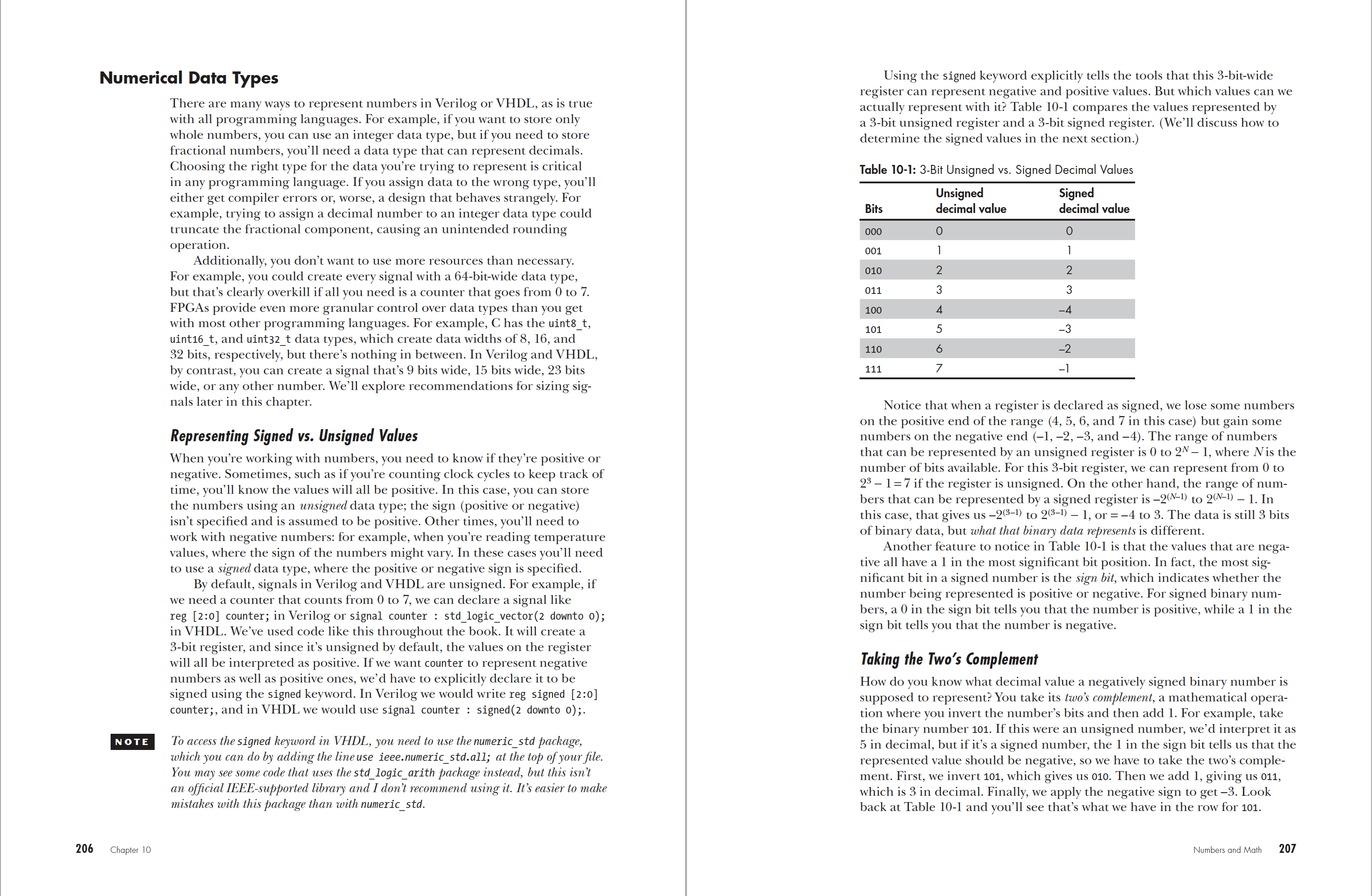Download Chapter 4: Storing State with the Flip-Flop
Look Inside!
Whether you have been toying with field programmable gate arrays (FPGAs) for years or are completely new to these reprogrammable devices, this book will teach you to think like an FPGA engineer and develop reliable designs with confidence.
Through detailed code examples, patient explanations, and hands-on projects, Getting Started with FPGAs will actually get you started. Russell Merrick, creator of the popular blog Nandland.com, will guide you through the basics of digital logic, look-up tables, and flip-flops, as well as high-level concepts like state machines. You’ll explore the fundamentals of the FPGA build process including simulation, synthesis, and place and route.You’ll learn about key FPGA primitives, such as DSP blocks and PLLs, and examine how FPGAs handle math operations and I/O.
Code examples are provided in both Verilog and VHDL, making the book a valuable resource no matter your language of choice. You’ll discover how to:
- Implement common design building blocks like multiplexers, LFSRs, and FIFOs
- Cross between clock domains without triggering metastable conditions or timing errors
- Avoid common pitfalls when performing math
- Transmit and receive data at lightning speeds using SerDes
- Write testbench code to verify your designs are working
With this accessible, hands-on guide, you’ll be creating your own functional FPGA projects in no time. Getting started with FPGAs has never been easier.
Requirements: To complete the projects in this book, readers should plan to purchase an FPGA development board, preferably with a Lattice iCE40 FPGA, a USB connection, and peripherals like LEDs, push-button switches, and a seven-segment display. Some projects may require other inexpensive parts.

